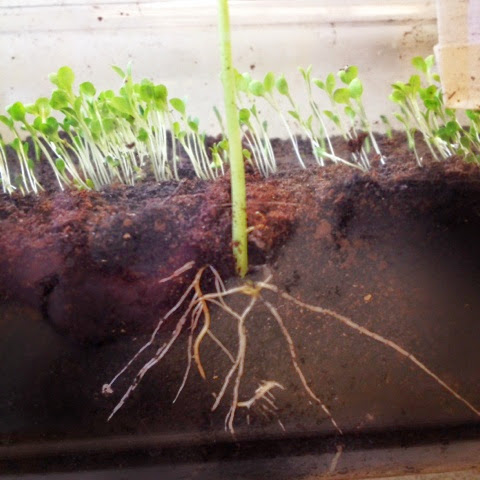We decided that our garden centre could be dismantled to make a new dramatic play centre. Some of the children suggested that we create a beach in the classroom, and others suggested a camping centre. I created a simple graph on chart paper, where each child placed a sticker to represent their choice. Afterwards, we talked about which option had MORE, and also about how we could tell that everyone had voted (because the number of stickers matched the number of children).
I then invited the children to contribute their ideas towards what we'd need to put in our centre. This co-creation of classroom centres is a vital aspect of Full Day Kindergarten; the children feel invested in their learning and that they play an important role in what happens in our room. Their ideas are given value when they get to print and draw pictures to represent their thoughts.
Our list included: a tent, sleeping bags, a grill, firewood, a submarine, a deer, and a thunderstorm.
I brought in our family's tent and assembled it in the classroom, with a crowd of excited children watching! We gathered in the tent to sing some camping songs, discussed the rules to ensure that the tent did not get damaged, and talked about safety when sleeping in a tent. When asked why we shouldn't sleep with food in our tent, some of the children thought that it was because the tent would get messy. Another student thought that it would attract pigs or skunks! Finally, we concluded that a bear would be an unwanted visitor in our tent at night!
I borrowed some camping books from our local libraries, and the Junior Kindergartens worked with the principal to generate a list of things we might bring camping.
We incorporated the children's interest into the sand table by adding pine cones, stones, and some deer figures. They enjoy creating "homes" for the deer which inspires conversations about what living creatures need to live happily. At the art centre, we created an opportunity for the children to paint a night-time scene of a camp site, complete with a tent and canoe. Their artwork is magically beautiful!
It's amazing to listen to the conversations that take place in the tent, as the children snuggle into the sleeping bags and pretend that they're camping. Imaginary bears and a starry sky fill their imaginations and inspire their play. They roast pretend marshmallows over our tissue paper fire, and cook camp food at the old table I've provided. I hear them telling stories of their camping experiences, and building on what they already know by listening to one another.
Again and again, I see that inquiry-led, play-based learning is the best way to inspire enthusiasm for learning in young children!















.JPG)
.JPG)




